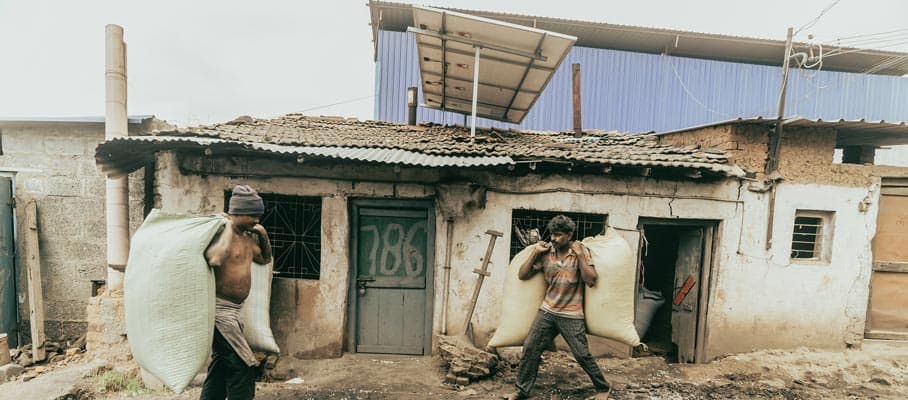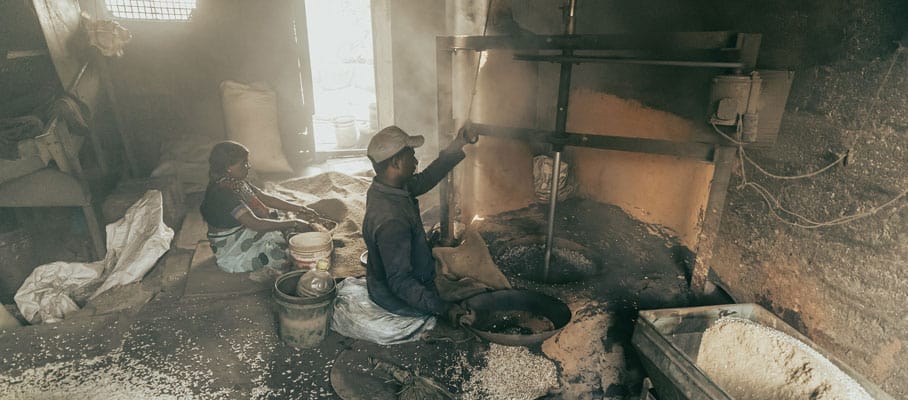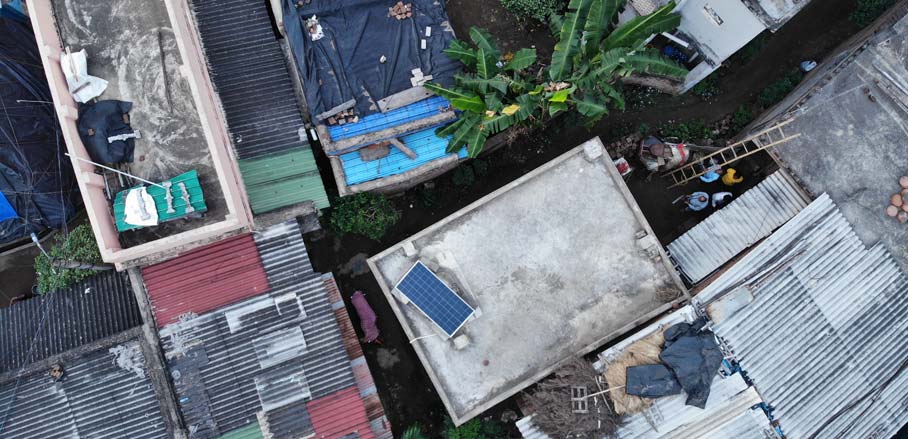Making Cities Inclusive for Marginalised and Climate Vulnerable Populations
The world today needs solutions, to eradicate poverty in a holistic and sustainable manner. They lie in better technology, affordable finance, and induced market linkages. All these are factors that can be incentivised through city governments, argue Huda Jaffer and Nirmita Chandrashekar, emphasising that the poor should be part of the solution and not the problem.
Increasingly, cities need solutions that address both climate change and inequality together. Interventions are needed that allow for the vulnerable to build their adaptation capacity and develop safety nets that help them get out of the poverty cycle. For that to happen, the individual level intervention is insufficient, and the state/city level is too broad and abstract. According to a World Bank publication, there are several characteristic factors that affect the urban poor’s sensitivity and their adaptive capacity to climate change and disaster risk, impacting vulnerability. Among these are: security of tenure, employment and financial insecurity, and social networks.
Why Do We Need to Eradicate Energy Poverty?
Energy poverty is a crucial issue to address in the fight against poverty. Studies show that the poorest pay three times more for their energy than the richest, and many of these calculations don’t even account for lost opportunities or indirect costs of expensive and unreliable energy. Energy poverty keeps the poor locked out of the global economy, not only because they can’t access schools, health care, or jobs, but because their time and labour are consumed by performing activities manually and inefficiently. Additionally, factors such as high temperatures considerably reduce productivity if energy-reliant tools that counteract them (such as passive construction practices or active sources like fans or coolers) are not available to the poor.
Tier two cities such as the Indian municipality of Dharwad, Karnataka, offer a lot of scope for establishing a renewable energy presence and making it a large share of the city’s energy mix. This constitutes a possibility to cater to the needs of low-income communities at household, livelihood-workspace level, settlement level, market level, and institutional level. At the livelihood-workspace level, efficiently built workspaces, energy-efficient equipment, and optimised systems can result in immense energy savings for the city and allow for reliable access to quality clean energy sources. The transition to clean energy will mitigate future emissions from settlements, markets, and industries.

Solar-powered mechanised blowers for sand roasting in making puffed rice in Urban Industrial Dharwad, Karnataka © SELCO Foundation
Impact of Heat Stress and Indoor Air Pollution on Workers in Poorly Designed Workspaces
The puffed rice factories in Kollikere, Dharwad are an example of how energy poverty has an effect on the economy and working conditions as well as on the more general quality of life of workers. The cluster consists of 80 workspaces involved in the processes of making puffed rice. Previously, the factory was located within the city limits. Due to complaints from neighbours because of smoke and dust from the units, they were shifted to their current location around 25 years ago, which is located two kilometres outside city limits. Due to poor construction, there is a lack of proper lighting and ventilation within the space. Due to the lack of ventilation, the smoke generated due to the processes doesn’t escape the space efficiently. This also causes a heat trap within the space, creating really uncomfortable working conditions.

Entrepreneurs engage in making puffed rice in Urban Industrial Dharwad, Karnataka © SELCO Foundation
Working hours are between 3 am and 2 pm. This is for two major reasons: first, the number of roasters and milling machines are limited and has to be shared by individuals at a ratio of 1 machine for 20 individuals. Second, the extreme heat during afternoon hours would spoil the quality of puffed rice and also create yet more uncomfortable working conditions. Such working hours, ending just before the hottest period of the day, significantly affect workers’ lives: the individuals have no opportunity to do anything after work such as professional or financial matters or maintaining a social life.
Generally, the production process is physically intensive and hazardous. There is a minimum of 5℃ increase in internal temperature compared to the outdoor temperature. Due to the nature of the work, individuals involved in the puffed rice-making process do not continue in the profession for long, leaving them with the need to find another employment opportunity.
“Automation and better buildings can make the processing of puffed rice much easier than it currently is. Buildings need to be made with higher roofs or exhaust systems for better ventilation for the smoke to exit the building. Smaller automated puffing machines can be added to the units to reduce physical work.” – Narayan Koleyennvar, Mediator for the puffed rice community in Kollikere, Dharwad, supplies the community with paddy and procures the puffed rice, owns the automated unit.
“Heat loss from the cooking systems adds to heat in the space. Addressing heat loss in these systems, by providing efficient appliances, space design and exhaust systems can make the workspaces more comfortable to work in by reducing the temperature within the space. And clean energy integration augments the heavy energy consumption of micro industries.” – Ashiq Ahamed, Senior Project Manager, TIDE, works on technologies for clean and efficient use of fuel for burning – especially related to food processing.
Which Way Forward?
SELCO Foundation has been working with 15 entrepreneurs on automating the process of rice roasting and introducing clean/insulated stoves. With inclusive financing facilitated through a local banking institute, the entrepreneurs are able to build assets to reduce drudgery, reduce losses in finished products and fuel, increase production capacity and productive hours – all of them resulting in income increase. To further optimise the utilisation of the productive hours and increase comfort conditions, SELCO has co-designed a holistic net-zero factory. It features improved workspace layouts and ergonomics to reduce indoor heat stress, air pollution and improve natural lighting, demonstrating to the community the effects such as reduced operational and recurring costs for health care, repairs, and electricity.
Climate resilience and poverty alleviation can be mutually reinforcing; strategies for climate action and inclusive development can be delivered synergistically. End user operational costs need to be made affordable through the design of buildings and applications that are energy-optimised. A demand-driven approach is advisable, as this will not only democratise the choice of the end user, but also has the potential to encourage them to develop their own solutions in similar urban cluster contexts. For inclusivity, adoption and replication of technology needs to be guaranteed.
We have to take these solutions forward and build an enabling environment that allows for replication and upscaling of these approaches. This will require incentivisation of stakeholders in city and municipal governances, urban livelihood missions/organisations, inclusive financiers, and service enterprises to get away from business-as-usual practices and take bold steps towards creating inclusive cities.
